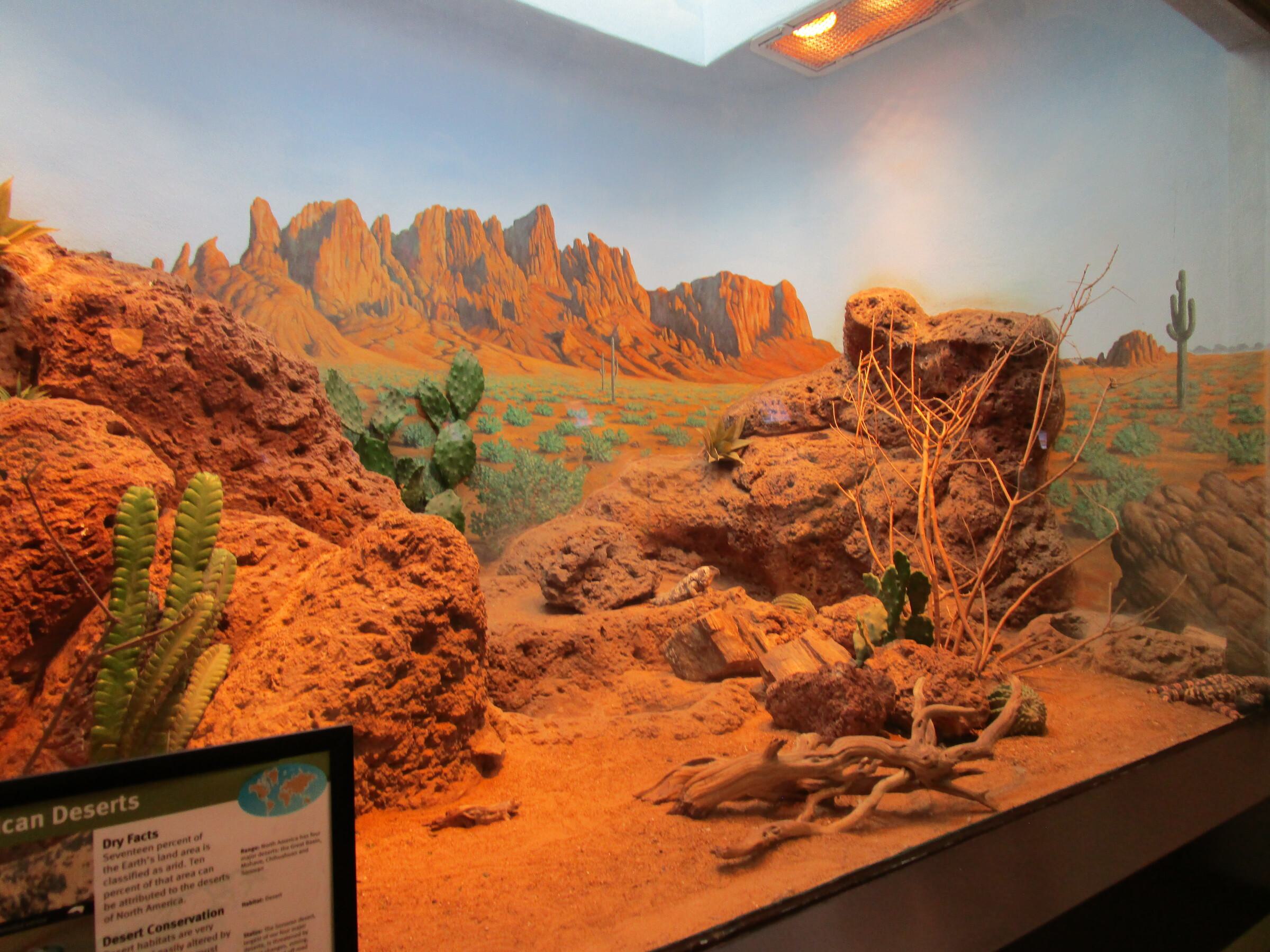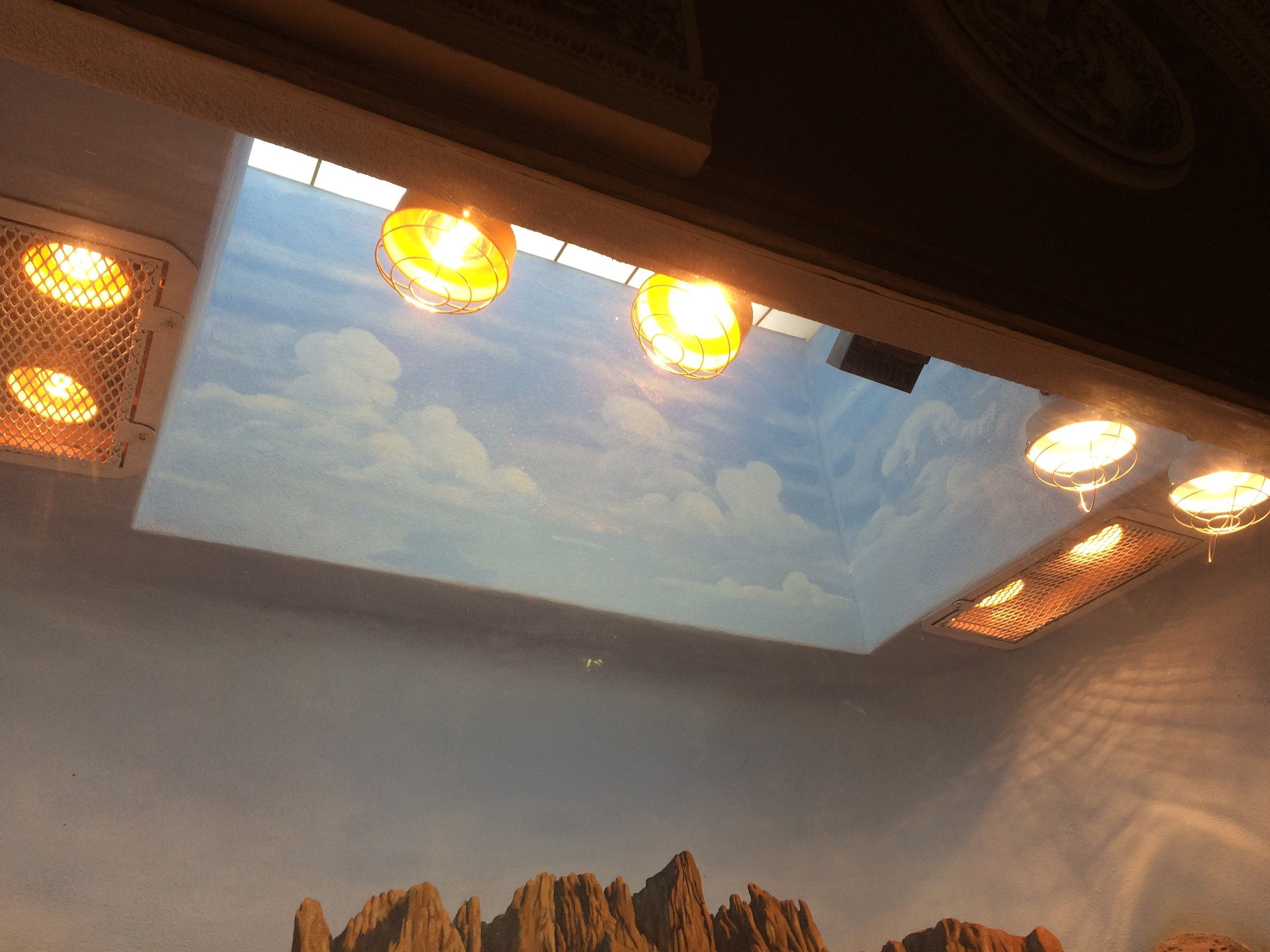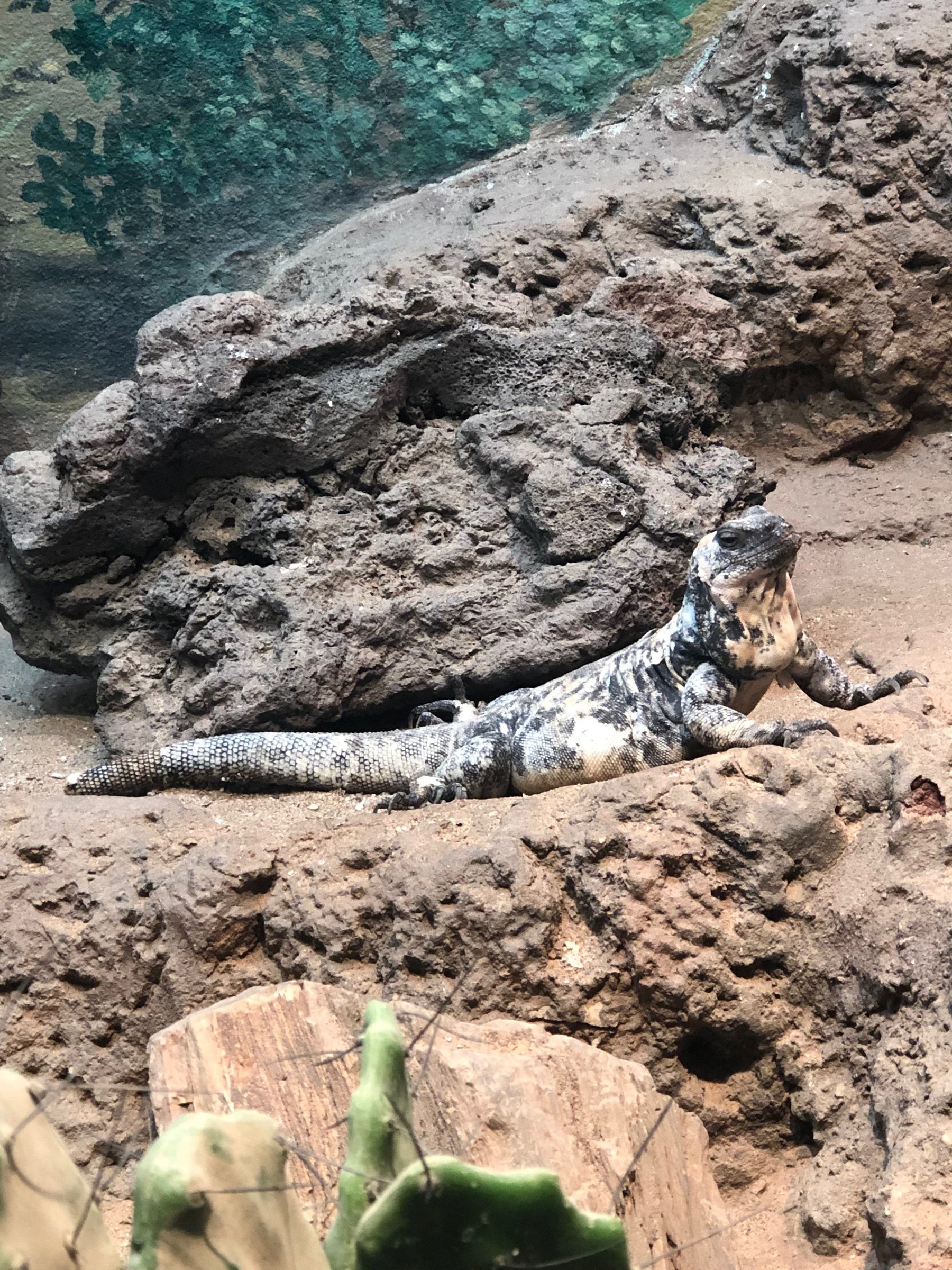Changing a habitat by manipulating lights, heat and moisture throughout the day can also be enriching, especially for sedentary, cold-blooded species.
You’ve probably heard that mammals and birds are “warm-blooded,” while reptiles, amphibians, fish and insects are “cold-blooded.” Warm-blooded, or “endothermic,” species control their body temperature internally through automatic processes like sweating and shivering. Cold-blooded, or “ectothermic,” animals rely on external sources of heat to obtain and maintain optimum body temperatures, and they move between locations with different temperatures in the environment to do so. Reptiles bask, laying out in the sun, until reaching optimum temperature, which energizes them. Optimal body temperatures vary between species and are affected by season, reproductive status, diet and many other factors. If a cold-blooded animal can’t reach optimum temperature, the metabolic consequences include appetite loss, weight gain and reduced behavioral diversity.
Proper lighting and heating are important to ectothermic species. These are provided in our Herpetarium by skylights, lamps and basking areas. Because animals have daily activity cycles, the lamps come on in the morning and go off at night, like flipping a switch. Anyone who has watched a sunrise, however, can tell you that natural light doesn’t turn on and off all at once. Instead, the sun comes up gradually, at first dim but becoming brighter, and sunny or shady spots change location throughout the day.
Our keepers look for new ways to enrich our animals by adding variety and dynamic elements to habitats. In the Herpetarium, dimmer switches were installed on the lights of “Big Desert,” a large habitat near the main entrance. These dimmers allowed independent and incremental brightening and darkening of each of Big Desert’s eight lamps, in order to better simulate the movement of the sun. Before changing permanently to the new switches, we monitored the behaviors of Big Desert’s animals: San Esteban chuckwallas and Gila monsters. In the wild, large-bodied chuckwallas are only active about six hours a day, so it’s crucial that they bask as soon as the sun is fully up. After midday foraging, they return at night to rocky crevices. Gila monsters instead spend their time in cover and near water sources. During this pilot study, we hoped to see an increase in areas of the habitat used by the two species when under a dynamic lighting system. We expected the chuckwallas in particular to move from spot to spot as the lights became brighter because this behavior would occur in the wild. We also wanted to evaluate if this change in husbandry was suitable for these reptiles.
Each species had preferences for specific parts of Big Desert that matched their natural histories: chuckwallas moved to places directly illuminated by spotlight, and, when we used dynamic lights, they moved to follow the brightest areas. Gilas, on the other hand, were under rocks or near Big Desert's water feature, and the movement of the lights didn't affect them as much. Unfortunately, when using the dynamic program, the lamps were no longer on at the same times and intensities, so the temperature in the habitat lowered about 5 degrees. Our system needed tweaking to ensure that lights were changing throughout the day while maintaining the temperature range needed for these species to reach their optimums.
Carefully managing habitat heat is a critical aspect of keeping reptiles and amphibians. In addition to providing adequate temperature ranges, animal care professionals should also consider naturalistic lighting relevant to time of day and season for each species. We are working to supplement Big Desert’s heating in order to ensure that dynamic lighting will not reduce the range of temperatures available to the lizards. When finished, dynamic habitat elements like progressive lighting are unique opportunities for indoor enrichment. For an example you can see right now, please check out the Herpetarium’s mountain chicken frog exhibit. Don’t let the name fool you; these animals are definitely amphibians, not birds! Their habitat has a special feature that periodically simulates the mists, lights and sounds of a lightning storm, and it is a good illustration of how to use variety and change to enrich the animals in our care.




